#park conservation
Explore tagged Tumblr posts
Text
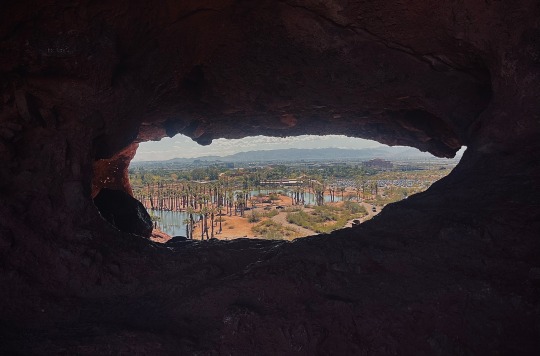
Eye Of Stone • Papago Park, Arizona
#Arizona#my photo#Papago park#Phoenix point of pride#hike#natgeo#photography#nature#landscape#national geographic#nerd alert#porthole#lotr#eye of sauron#the hobbit#stone#palm trees#oasis through a telescope#lagoon#photographers on tumblr#park conservation
14 notes
·
View notes
Text
California Park Fire grows, now 6th largest
#Air Quality#California park fire#California wildfires#emergency response#fire evacuation#fire impact#fire prevention#fire safety tips#fire season#fire season preparation#fire weather#park conservation#park fire alerts#park fire recovery#park fire updates#wildfire awareness#wildfire management#wildfire news#wildfire preparedness#wildfire safety
2 notes
·
View notes
Text
"For over a decade, the Yosemite toad has been recognized as a federally threatened species, after experiencing a 50% population decline during the Rim Fire of 2013.
The wildfire, which encompassed a mass of land near Yosemite National Park, made the amphibian species especially vulnerable in its home habitat.
Native to the Sierra Nevada, the toads play a key role in the area’s ecosystem — and conservationists stepped in to secure their future.
In 2017, the San Francisco Zoo’s conservation team began working with the National Park Service, Yosemite Conservancy, U.S. Fish & Wildlife Service, California Department of Fish & Wildlife, and the U.S. Geological Survey.
The goal of all of these stakeholders? To raise their own Yosemite toads, re-establishing a self-sustaining population in the wild.
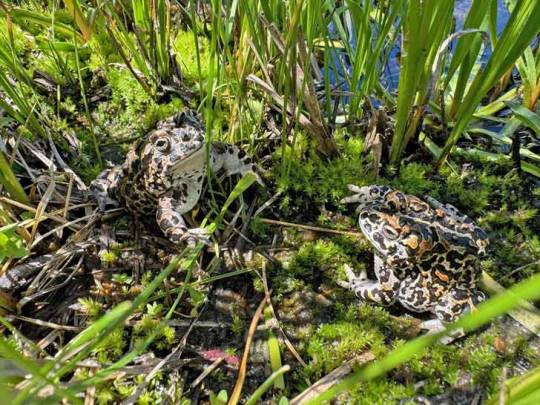
“Over the past several years, SF Zoo’s conservation team has been busily raising hundreds of these small but significant amphibians from tadpole stage, a species found only in the Sierra Nevada, for the purpose of reintroducing them to an area of Yosemite National Park where it was last seen 11 years ago,” the zoo shared on social media.
By 2022, a group of toads were deemed ready for release — and at the end of June of this year [2024], 118 toads were flown via helicopter back to their habitat.
“It’s the first time anyone has ever raised this species in captivity and released them to the wild,” Rochelle Stiles, field conservation manager at the San Francisco Zoo, told SFGATE. “It’s just incredible. It makes what we do at the zoo every day worthwhile.”
Over the past two years, these toads were fed a diet of crickets and vitamin supplements and were examined individually to ensure they were ready for wildlife release.
Zoo team members inserted a microchip into each toad to identify and monitor its health. In addition, 30 of the toads were equipped with radio transmitters, allowing their movements to be tracked using a radio receiver and antenna.
The project doesn’t end with this single wildlife release; it’s slated to take place over the next five years, as conservationists continue to collect data about the toads’ breeding conditions and survivability in an ever-changing climate. They will also continue to raise future toad groups at the zoo’s wellness and conservation center...
While the future of the Yosemite toad is still up in the air — and the uncertainty of climate change makes this a particularly audacious leap of faith — the reintroduction of these amphibians could have positive ripple effects for all of Yosemite.
Their re-entry could restore the population balance of invertebrates and small vertebrates that the toads consume, as well as balance the food web, serving as prey for snakes, birds, and other local predators.
“Zoo-reared toads can restore historic populations,” Nancy Chan, director of communications at the San Francisco Zoo, told SFGATE.
Stiles continued: “This is our backyard, our home, and we want to bring native species back to where they belong.”
-via GoodGoodGood, July 11, 2024
#yosemite#yosemite national park#california#united states#amphibian#frogs and toads#frogblr#frogposting#toadblr#toad#endangered species#wild animals#biodiversity#wildlife conservation#wildlife#good news#hope
1K notes
·
View notes
Text
What's most amazing about people who hate that birds are dinosaurs is that, without the discovery of birds being dinosaurs in the 1960s, none of y'all would have ever actually cared about dinosaurs
the history:
dino craze in 1800s. people thought, birds are very similar to these guys. Dollo fucked it up, made a bad theory, and people stopped thinking that
Early 1900s, dinosaurs deemed sluggish, stupid, pointless evolutionary failures. most people not really into dinosaurs anymore. this continues until
1960s: Deinonychus discovered. suddenly, dinosaurs interesting again: vibrant, lively, warm blooded animals. Also... birds might be dinosaurs?
from the 60s through the 70s, a slow buildup of dinosaur culture - both in crappy stop motion movies, but also in children's books and other media
80s cladistics revolution shows birds are living dinosaurs, though not without flaws. documentary after documentary is made, causing the major dinosaur boom of the late 80s and early 90s
the peak of this boom are the A&E and PBS documentaries, which both outright state birds are dinosaurs
cartoons like land before time and other dinosaur content keep coming out too, especially at the end of the 80s and the earliest 90s
the book jurassic park, referencing the birds are dinosaurs thing, is written in the late 80s. in the early 90s, is adapted into one of the greatest blockbusters of all time. now dinosaur interest is MAINSTREAM.
jurassic park isn't the start of the dinosaur boom, it is the apex
90s becomes the decade of dinosaurs, with tons of new discoveries, television shows, documentaries, and other programming
1996 first feathered "nonavian" dinosaur discovered. birds are dinosaurs is the closest thing we have to proven phylogenetic fact
1999 walking with dinosaurs premieres, revolutionizing the dinosaur-documentary genre.
early 2000s becomes the age of Period-Type Dino-Docu-Dramas
velociraptor is determined to have feathers
suddenly, dinosaur mania starts to die in the later 2000s
even though discoveries keep happening and we learn so much in the 2010s, the 2010s becomes a very regressive time - a sort of reactionary response to the birdification of dinosaurs and the dinosaurification of birds. the height of this is jurassic world
we may be in the middle of a dino-docu-drama revitilization thanks to prehistoric planet. stay tuned on that one
like, everyone was fine with the birdification of dinosaurs up and until they looked "feminine" on the outside, because of feathers.
It's just all such transparent misogyny and homophobia and people who react against feathered dinosaurs or birds being dinosaurs are just... so transparently parroting conservative talking points
Anyways, yeah. without birds are dinosaurs, you wouldn't have jurassic park. Sooooo
#I don't know why I keep talking about this#I'm procrastinating my museum collection conservation assignment tbh#birds are dinosaurs#feathered dinosaurs#jurassic park
2K notes
·
View notes
Text




" The Magnificent Mana " // © Marlon du Toit
#Mana Pools National Park#Zimbabwe#nature#landscape#Wilderness#Wildlife#Deer#Forest#Trees#Conservation#photography#aesthetics#wanderlust#explore#follow#discover
385 notes
·
View notes
Text
@daisygilardini
#Wapusk National Park#polar bears#polar bear cub#wildlife photography#conservation#cute animals#curators on tumblr#family
958 notes
·
View notes
Text
Good News - May 15-21
Like these weekly compilations? Support me on Ko-fi! Also, if you tip me on Ko-fi, at the end of the month I'll send you a link to all of the articles I found but didn't use each week - almost double the content!
1. Translocation of 2,000 rhinos in Africa gets underway in “one of the most audacious conservation efforts of modern times”
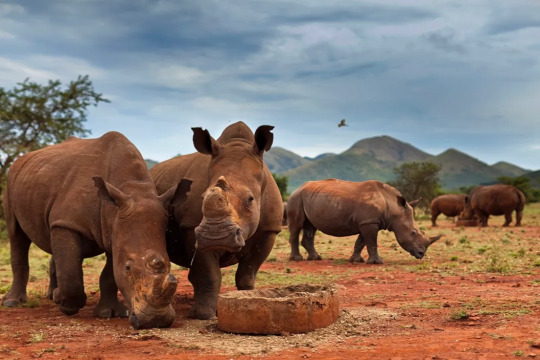
“The 2,000 rhinos - more than are currently found in any single wild location in Africa - represent around 12-15% of the continent’s remaining white rhino population. […] “Rhinos perform an important ecological function in the environment as a large grazing herbivore,” says Dale Wepener[….] “The protection of rhino is far more than just looking after rhino; other species that occur in the protected areas will benefit from the protection,” explains Jooste. “This will lead to an increase in diversity and result in much healthier ecosystems.”
2. Florida Corridor Buffers Effects of Climate Change on Wildlife — And People
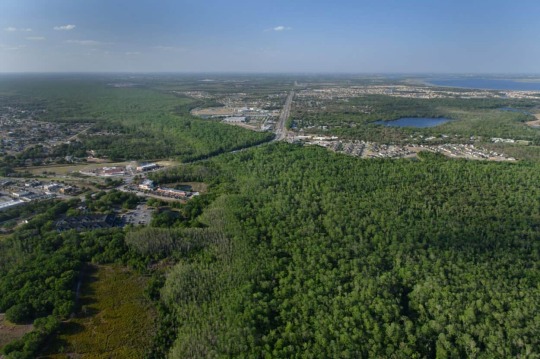
“A massive multi-partner effort that has conserved 10 million acres for wildlife in Florida over past decades will help buffer wildlife—and people—from the effects of climate change, a new report says. […] Protecting these corridors is important for wildlife genetics, demography and connectivity […], conducting prescribed fires in the corridor can reduce the risk of more intense wildfires [… and] they can provide buffers against hurricanes and seasonal thunderstorms.”
3. Global life expectancy to increase by nearly 5 years by 2050 despite geopolitical, metabolic, and environmental threats
“Increases are expected to be largest in countries where life expectancy is lower, contributing to a convergence of increased life expectancy across geographies. The trend is largely driven by public health measures that have prevented and improved survival rates from cardiovascular diseases, COVID-19, and a range of communicable, maternal, neonatal, and nutritional diseases (CMNNs).”
4. Valencia has Spain’s longest urban park

“Jardin del Turia (Turia Garden) is the green spine of the City of Valencia and Spain’s (and possibly Europe’s) longest urban park stretching for a length of 8.5 kilometres [… and] the current administration plans to make Jardin del Turia Europe’s largest city green space by extending it to the sea[….] Almost all Valencia residents (97 per cent) live within 300 metres of an urban green space. […] Jardin del Turia is a true urban oasis that provides exceptional thermal comfort, with a temperature difference of up to three degrees compared to other areas of the city.”
5. This Paint Could Clean Both Itself and the Air
“When an artificial ultraviolet light source shines on [photocatalytic] paint, the nanoparticles react with pollutants to make them break down—theoretically removing them from the nearby air and preventing a discoloring buildup. [… R]esearchers developed a new photocatalytic paint that they claim works using UV rays from ordinary sunlight, making its self-cleaning properties easier to activate. They’ve also shown that they can effectively produce this paint from recycled materials [including fallen leaves].”
6. Planting Seedlings for a Cooler Rockingham
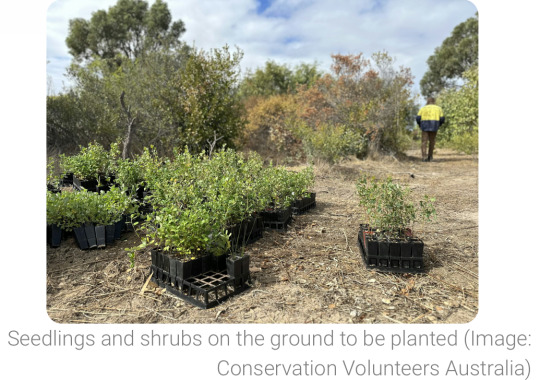
“A dedicated group of volunteers recently planted over a thousand native seedlings in Lewington Reserve [… and] re-established canopy cover to areas of the reserve to create cooling shade for the local community and provide homes for native wildlife. […] Planting lots of trees and shrubs in urban areas can help create shade and cool cities, mitigating the impacts of climate change, contributing to biodiversity conservation and building greener, more resilient communities.”
7. Sydney’s first dedicated affordable housing for trans women designed to deliver ‘positive outcomes’

“Community housing provider and charity Common Equity NSW, […] which is for people on very low to moderate incomes, prides itself on creating inclusive living and promotes the independence and well-being of people and communities […, and] will deliver the first-of-its-kind social housing in a bid to provide a safe place to live for transgender women seeking an affordable home.”
8. Rewilding: How a herd of bison reintroduced to Romania is helping ‘supercharge’ carbon removal
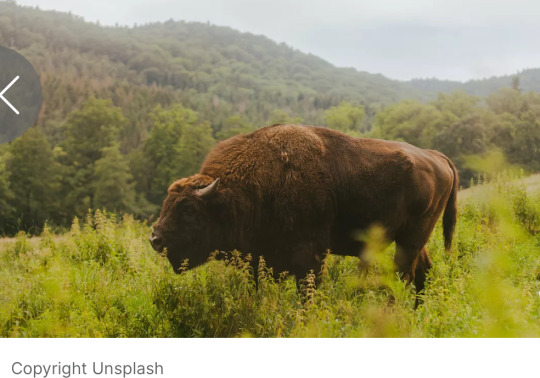
“170 European Bison reintroduced to Romania’s Țarcu mountains could help capture and store the carbon released by up to 84,000 average US petrol cars each year. […] By grazing a 48 square kilometre area of grassland in a wider landscape of 300 kilometres squared, they helped to capture an additional 54,000 tonnes of carbon each year. That is around 10 times the amount that would be captured by the ecosystem without the bison.”
9. World’s biggest grids could be powered by renewables, with little or no storage

“[…] 100% renewable supply can then match the load by putting surplus electricity into two kinds of distributed storage worth that [an energy expert] says are worth buying anyway – ice-storage air-conditioning and smart bidirectional charging of electric cars, and recover that energy when needed, filling the last gaps with unobtrusively flexible demand.”
10. Supporting the Long-Term Survival of Copper River Salmon and Alaska Native Traditions
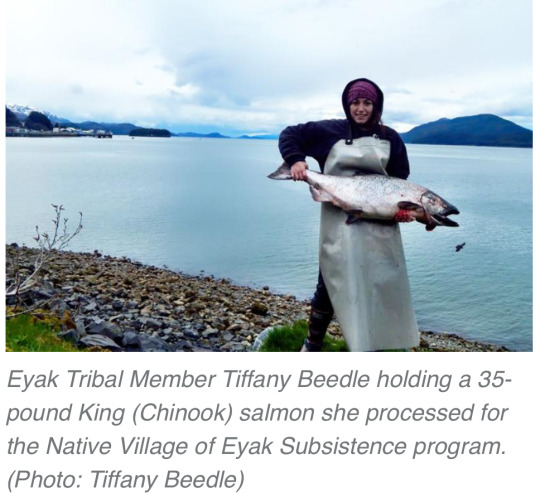
“With $4.3 million in NOAA funds, the Copper River Watershed Project and The Eyak Corporation will remove fish passage barriers, opening more streams for salmon spawning and subsistence fishing. [… As part of this effort, o]ld narrow culverts that constrict water flow will be replaced with “stream simulation” culverts wide enough to fit the full stream, including its banks. They are also deep to allow contractors to place stones and other material inside to mimic a natural stream bottom.”
May 8-14 news here | (all credit for images and written material can be found at the source linked; I don’t claim credit for anything but curating.)
#hopepunk#good news#rhino#white rhino#africa#conservation#rewilding#climate change#florida#wildlife#life expectancy#health#spain#green space#urban parks#recycling#trees#global warming#trans#affordable housing#australia#bison#romania#carbon#carbon capture#renewableenergy#reforestation#salmon#alaska native#nature
390 notes
·
View notes
Text

This Gray Catbird looks concerned for the environment. But on the plus side, this Pier 1 marsh at Brooklyn Bridge Park "traps" a lot of trash, removing it from the East River. 😃
#birds#birding#urban birding#nuts_about_birds#birdstagram#patch birding#nature blogger#nyc nature#brooklyn#brooklyn bridge park#nyc#nature#catbird#conservation#recycle#environment
463 notes
·
View notes
Text
Fish of the Day
The fish of the day today is the devils hole pupfish!
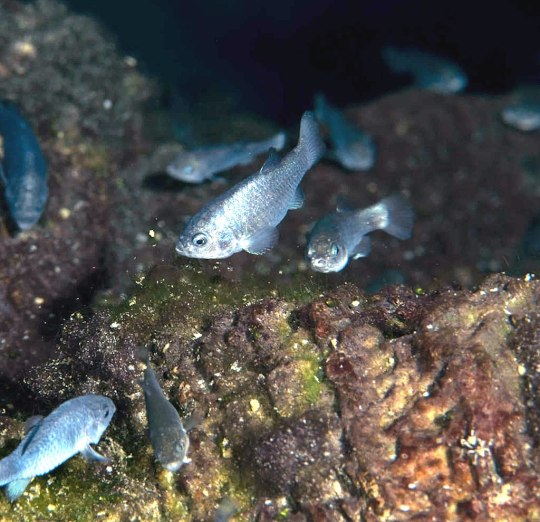
The devils hole pupfish, scientific name Cyprinodon diabolis, is an endangered fish known to live in exactly one spot, Devils hole. Devils hole is a limestone cavern with a geothermal pool found in Nye county of Nevada, and a disconnected section of Death Valley National Park. The geothermal pool keeps the water at a consistent 33 degrees Celsius all seasons, and has low dissolved oxygen amounts. The surface of water at the cave is only 72ft by 12ft, but below that the cave descends deep into the earth. Below the surface pool there is a larger cavern descending to 150 meters at its deepest before branching into a smaller tube at the bottom, the depth of which is currently unknown.1965 two teenagers went diving in the hole with scuba gear, and were never seen again, rescue divers sent after them found a dropped flashlight, and other scuba gear but the bodies were never found. One rescue diver dropped a weighted plate that fell a full 932ft without contacting a bottom to the chamber, describing the water below him as an "infinity chamber". Later scans of the cave revealed it is at least as deep as 1,247ft, although to this day the depth is still unknown. Another well known aspect of the cave is that it can be used to determine when there are earthquakes all over the world. The water surges and has displayed unique patterns during the 2022 Mexico 7.6 magnitude earthquake, along with other strong earthquakes further from the hole. Such as: the 2012 6.2 magnitude earthquake in Papua New Guinea, or the 2018 7.4 magnitude earthquake in Indonesia. Devils hole pupfish are known to live only in the first 80ft of the cave.

Devils hole pupfish are unique in appearance, getting only as large as an inch, and being one of few species that have no pelvic fins, however when raised in colder conditions these pupfish will regrow these appendages. As juveniles these fish are an off white color, and females retain some of this coloring in adulthood. This species has only ever been recorded with as many as 500 wild fish at its highest, hitting an all time low point of 42 fish in 2007. The more recent numbers are looking up however, and there were 263 pupfish observed in spring of 2022. The survival from egg to adulthood is small, but the likelihood with human effort that this fish will survive the test of time is high. Described as possibly the most isolated wild vertebrate species in the world. These fish live only 10-14 months, reaching sexual maturity at 8-10 weeks old and spawn year round with peaks in mid February-May, and a smaller peak in July-September. Due to the unique oxygen levels of devils hole, these fish have adapted to enter a state of tupor, similar to hibernation, where they can live anaerobically. This allows them to go without breathing for up to 2 hours, however they produce ethanol as a byproduct.
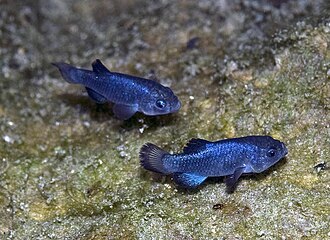
Most of the devils hole pupfish life is on the rocky outcrops of the surface waters of the cave system. Breeding, egg laying, diet, resting, and schedules surrounding the placement of the sun all depend on these rocky outcroppings of stone near the surface of the water. The diet of these fish is dependent on the rock outcroppings of the cave, as they eat anything they can find in the cave system. This includes: small freshwater crustaceans, beetles, flatworms, freshwater snails, inorganic matter made of small sections of the caves limestone, along with spirogyra and diatom algae, which grows on the rocks themselves and makes up most of the pupfish's diet. Due to their diet being mostly algae types, pupfish are incredibly susceptible to the seismic activity in the devils' hole, as it creates small tsunamis along surface water and washes away algae on the rocks, leaving them without a majority of their food source until it regrows. When these earthquakes happen the pupfish are known to flee into the deer waters of the cave until the water has stilled, and are thought to perhaps feel earthquakes before they happen, although not much research has been done on this yet.
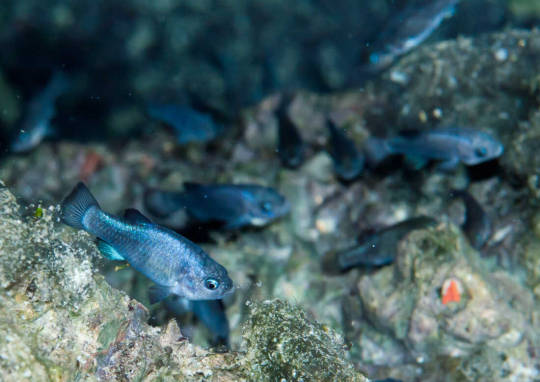
Have a good Wednesday, everyone!
#pupfish#fish#fishblr#devils hole#devils hole pupfish#nevada#Cyprinodon diabolis#death valley#death valley national park#ash medows#ash medows fish conservation
217 notes
·
View notes
Text
So... it seems I accidentally deleted an ask rather than answering it. To whoever asked "is it okay to visit SeaWorld? Does the money go to giving the orcas good care?"... here is your answer!
The SeaWorld parks, as well as Busch Gardens, Discovery Cove, and a few others, are operated by the recently renamed United Parks and Entertainment, a for-profit theme park company. Like any other corporation, their first goal is to remain profitable. Obviously, a large portion of that goes to corporate leadership and shareholders. But that's far from unique to United, or theme parks in general. It's a byproduct of the greedy world we live in. If you're willing to buy a ticket to Disney or Six Flags, then buying a ticket to a SeaWorld or Busch Gardens is no more immoral.
According to the AZA, approximately 46% of their members are for-profit. And while AZA zoos certainly vary in quality (anywhere from "acceptable" to "exceptional" in my opinion), for-profit status does not cheapen or detract from the work they do. In fact, for-profit institutions often have more financial freedom for animal care and conservation efforts than their non-profit counterparts. Non-profit zoos and aquariums are wonderful places, but believe me when I say there's a startling amount of politics in every aspect of their management. Non-profit status does not automatically make a zoo better, and for-profit status does not automatically make a zoo worse.
Now... do SeaWorld ticket sales go toward giving their orcas (and other animals) good care? Yes.
While it's certainly simplistic for parks to claim, as they do, "just by buying a ticket today you're helping save animals in the wild!"... it's not exactly a lie. Being for-profit, SeaWorld doesn't ask for donations to fund park operations or outreach endeavours. That revenue is generated by selling tickets, merchandise, food, etc. The same goes for their wildlife rescue and rehab program, Rising Tide conservation program, Coral Rescue Center, and the SeaWorld-Busch Gardens Conservation Fund, as well as partner organizations like OCEARCH and the Hubbs-SeaWorld Research Institute.
Take ticket sales away, and they can't care for their animals, or continue to fund conservation projects. While I don't know the whole story of what exactly is going on with Marineland Antibes, it appears that the park is in a dire financial situation due to plummeting attendance, to the point that they can no longer maintain their killer whale habitat and are trying to offload their animals onto an Asian aquarium or, potentially, an as-of-yet non-existent third party sea pen. While certainly well-meaning, years of boycotts against Marineland ultimately put their animals in a position where they are not being properly cared for. And it would be horrifying if the same thing happened to SeaWorld. I don't think many people, in their fervor to punish the parks for their perceived misdeeds and save the animals, thought about what the reality of driving a zoological facility into financial ruin would look like.
Don't get me wrong, SeaWorld's shift toward promoting itself as a thrill park that also does conservation rather than a marine facility that happens to have roller coasters annoys me. I would have rather they built a separate, neighboring park for the rides, or at least integrated them into the existing park less obtrusively (Disney's Animal Kingdom, for example, seemlessly integrates the theme park and zoo elements, although they have the benefit of the incredibly talented Imagineering team behind them). But as tiresome as the constant roller coaster announcements are, they are what kept the company afloat financially in the years immediately following Blackfish, drawing in a crowd that previously had no interest in the parks, and for that I'm grateful. Thankfully, SeaWorld is in a better spot nowadays. But the only way to convince them that their animals, not their roller coasters, are what people want to see... is to visit and see the animals.
In short, yes, part of your SeaWorld ticket funds care for their orcas and their many admirable projects. Now if only more of it went to giving their staff better salaries.
#their staff make less money than a lot of other major theme parks#the animals have great care... the people uh...#not as much#seaworld#zoos#aquariums#conservation#answered asks#anonymous
208 notes
·
View notes
Text




Absolutely in love with my job and the little surreal universe that I'm part of this winter. We got 6ft/2m of snow this week and I have to snowshoe to the gym, office, and phone, but it's just so good and weird.
54 notes
·
View notes
Note
Tim I noticed a lot of indigenous patches on your jacket, are you Native?
Idk what my dad was 'cause I never knew him, but yeah my mom is (or... Was.. I guess..) Muscogee, the tribe native to the part of Alabama I'm in.
If I remember correctly she came to Alabama from Oklahoma (where a lot of Natives were displaced to in the 1800s) to "get back to her roots."
But yknow, I was separated from her in childhood (which tbh is upsettingly common for Native families) and I was raised in a very white very Catholic asylum so I'm not as connected to the culture as I'd like to be.
-Tim
#OOC: Olea speaking#this is kind of a self-indulgent headcanon but HEAR ME OUT it adds a lot to Tim's character specifically#we're talking about a character who was separated from his mom in childhood and locked up in a psych ward#suffers from chronic physical and mental illness made significantly worse by the institution that was supposed to be helping him#forced to regulate his emotions more than other people have to so he isnt misinterpreted as a threat#struggles with addiction#had to work twice as hard as anyone else in his friend group just to be given the same opportunities#a much more common experience inside BIPOC communities#and he clearly has ties to the land (especially the park) nobody else has#you know how in season 2 Alex starts yapping to Jay about how the park is cursed?#maybe he was right#maybe that *thing* has been here for hundreds of years#and nobody was ever able to settle the land so eventually the Department of Conservation turned it into a state park#and Tim isnt some random “patient zero”#but he has ancestral ties to the land and was more receptive/at risk to Operator Sickness (but was also more resistant to it long term)#JUST SAYIN 👀#im half Katu and I desire my comfort character to be a halfie with me we need more non-white rep in mh#ask.txt#marble hornets#mh#tim wright#afterlife au#slenderverse#Native!Tim
144 notes
·
View notes
Text
"Two weeks ago [mid-June, 2024], Yellowstone National Park made headlines when a mother grizzly bear was spotted out and about with five cubs in tow — the biggest grizzly bear cub litter ever seen in the park.
Grizzly bears in that region of North America typically only have one to three bear cubs a litter.
Frank van Manen, the leader of the Interagency Grizzly Bear Study Team, said it was possible that an “adoption” event had occurred, in which two mothers give birth in the same year, and one ends up taking on the sibling’s cubs.

In an interview, van Manen told Wyofile that if the bears had all been born in the same litter, it would be the first five-cub litter “recorded in the history of the Greater Yellowstone Ecosystem.”
“Whether it was an adoption or whether it truly is a five-cub litter, it just amazes me that every year there’s some new surprise to us, even after intensively studying this population for more than 50 years,” van Manen said. “I just think that’s cool.” ...
On top of this record sighting, [Grizzly watch Bill] Hamblin is baffled by the sheer number of cubs that have been spotted so far in 2024.
Since they started emerging in the spring, the total count of unique grizzly bear cubs spotted has ticked up to a whopping 18 — triple the average number.
“That’s more than we’ve ever seen,” Hamblin said."
-via GoodGoodGood, July 3, 2024
#yellowstone#yellowstone national park#wildlife#grizzly bear#united states#wyoming#biodiversity#bears#baby animals#cute animals#baby bear#bear#biology#ecology#keystone species#wildlife conservation#conservation#endangered species#ecosystems#rewilding#animal conservation#good news#hope
1K notes
·
View notes
Text

Predation, not fear of wolves, keeps elk from denuding Yellowstone
So you remember that "how wolves change rivers" video that came out a few years ago? The premise was that with the reintroduction of gray wolves to Yellowstone National Park, they singlehandedly altered the behavior of overpopulated elk, who were less likely to damage riparian vegetation and allowed rivers to recover to a more natural state.
It is true that elk behavior has changed, and that has had a positive effect on ecosystem within Yellowstone. However, a new in-dept study demonstrates that it was more of a group effort of several different species of predator--humans included--rather than the wolves alone. It isn't just the presence of wolves that cause the elk to be more fearful, but increased risk of predation overall.
Obviously this is a new study, and it stands alone at the moment. So there will almost certainly be critiques that help us fine-tune our understanding of what's going on here. But the more information we have to flesh out the story of Yellowstone's rewilding, the better.
What I want to emphasize is that this is NOT an argument against the positive ecological role of wolves as a keystone species. There are all too many anti-wolf activists who will see this as an excuse to vilify this species, since those of us who support wolf reintroduction often leaned on the earlier studies to show the benefit of wolves within Yellowstone.
Rather, I want to promote the idea that this study helps demonstrate that biodiversity = good! Wolves are good, mountain lions are good, grizzly bears are good, because they are all a part of the native ecosystems within Yellowstone and beyond. Obviously we now have to balance this out with post-settlement human conflicts, but we have increasing evidence that there are so many more options besides the wholesale extermination of large predatory species anywhere they might ostensibly come into contact with humans or our livestock.
So no, wolves are not the miracle animal that earlier narratives have painted them as, but they are still a crucial keystone species in the ecosystems they historically inhabited prior to European/American colonization and extermination efforts, and this study still supports wolf reintroduction, particularly within Yellowstone.
#wolves#gray wolves#Yellowstone National Park#North America#Wyoming#nature#wildlife#animals#ecology#environment#science#conservation#scicomm#keystone species#elk#habitat restoration#restoration ecology#how wolves change river
78 notes
·
View notes
Text


I won't stop sharing this. I simply can't. The American people need to know.
https://e360.yale.edu/features/open-for-business-the-trump-revolution-on-public-lands
#election 2024#conservation#wildlife#nature#2024 presidential election#american politics#politics#us election 2024#us politics#america has failed us#public land#national park#national forest#forest#nature lover#hunter#hunt#hiker#hike#fisherman#outdoorsman#outdoors#donald trump#us election#trumps america#utah#artic national wildlife refuge#bears ears national monument#grand Staircase Escalante national monument#us elections
58 notes
·
View notes
Text
Brazil's Lencois Maranhenses National Park, famed for its white dunes that fill with blue and emerald lagoons in the rainy season, was on Friday declared a UNESCO World Heritage Site. The vast park, named for the dunes' resemblance to a bedsheet spread across the landscape—"lencois" means sheets in Portuguese—is located in the northeastern state of Maranhao, in a transition zone between the Amazon, Cerrado, and Caatinga biomes. The decision was taken during the 46th annual meeting of the United Nations World Heritage Committee, which is taking place in India's capital New Delhi.
Continue Reading.
#Science#Environment#Conservation#UNESCO World Heritage Site#Lencois Maranhenses National Park#Brazil
84 notes
·
View notes